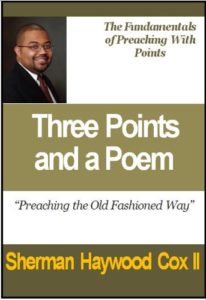I didn’t know Cox’s book existed, but virtually everyone has heard about sermons crafted with three points and a poem. It’s almost always said in jest (and that’s no slam on Cox).
One of the things I’m learning from reading Jonathan Edwards’s early sermons is what Kimnach refers to as “the seventeenth-century Puritan sermon” (p. 27). Edwards loosely followed a three-point structure of explication, confirmation, and application, borrowed from a seventeenth-century author, Wilkins (Ecclesiaastes, Or, A Discourse Concerning the Gift of Preaching as it falls under the Rules of Art (London, 1646)).
Kimnach provides a detailed look at each of the three and I will summarize the first one, explication, in this post (p. 29). He writes,
“Explication is either of the text…or of the doctrines deduced from it.”
If you decided to develop your sermon from the text, then that would include three things:
First, an “Unfolding [of the] difficulties” of that text. This involved unraveling the difficulties of a phrase, the circumstances surrounding that text (to whom it was written), and the Analogy of Faith (other similar Scriptures).
Second, “Distinguishing ambiguous…words [and/or] phrases.”
Third, “dividing of the Text, which must not be…Needlesse [sic.] [or] Obscure.”
If you decided to develop your sermon from the doctrines within your text, then you would:
One, Clearing their inference (meaning, I think, that you make a clear connection between your text and the doctrine you are expounding).
Two, “Showing the latitude of every…Truth [or] Duty…According to their severall [sic.]…Branches [or] Degrees.”
Let me quickly say two things that might help our own sermon development.
First, Edwards (through Wilkens) did not divide the Text needlessly. That means he only showed divisions that were important for establishing meaning and application. Before Sunday, check how you’ve divided the text and eliminate any unnecessary divisions (those that do not highlight critical flow of thought/argument).
Second, from the second, Two, above, Edwards has made me realize I need to spend more time meditating on the range that a particular doctrine has in life, both truth and duty. Before Sunday, see if you have explored the far-reaching effects of your doctrine.
And may God be glorified in the church and in Christ Jesus (Ephesians 3:21).
Randal
P.S. Next time, Lord willing, we’ll explore the confirmation and, then, application sections.



Please note: I reserve the right to delete comments that are offensive or off-topic.